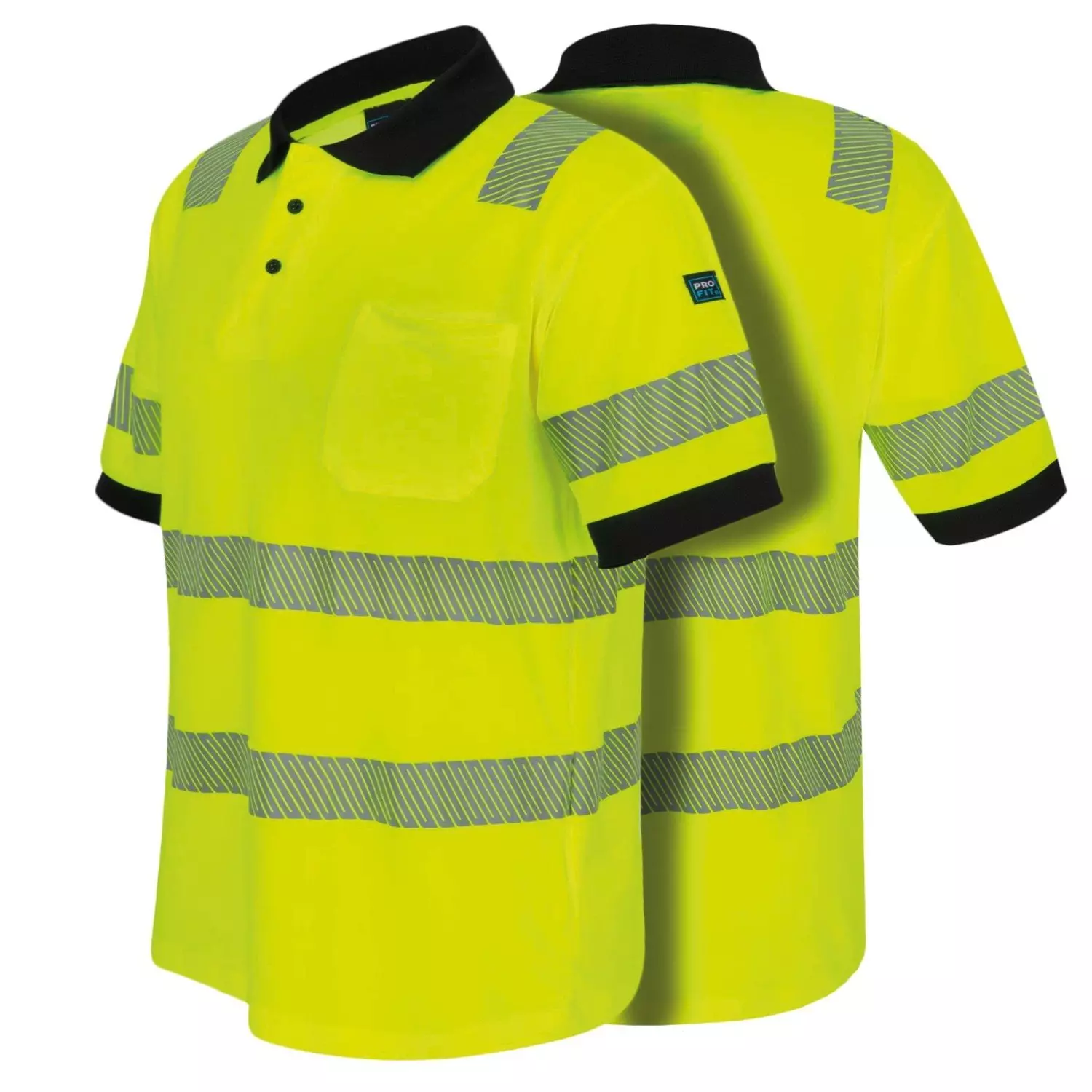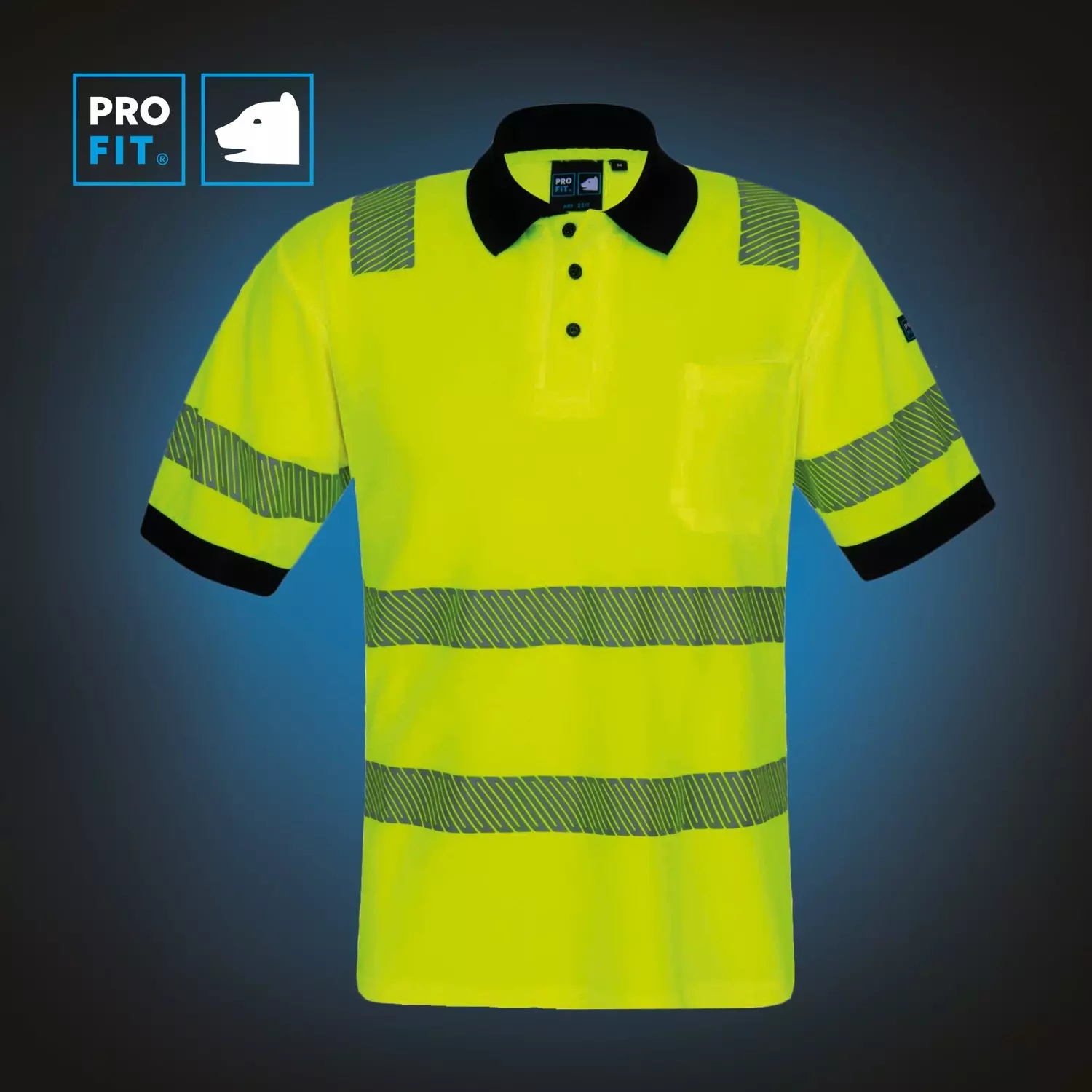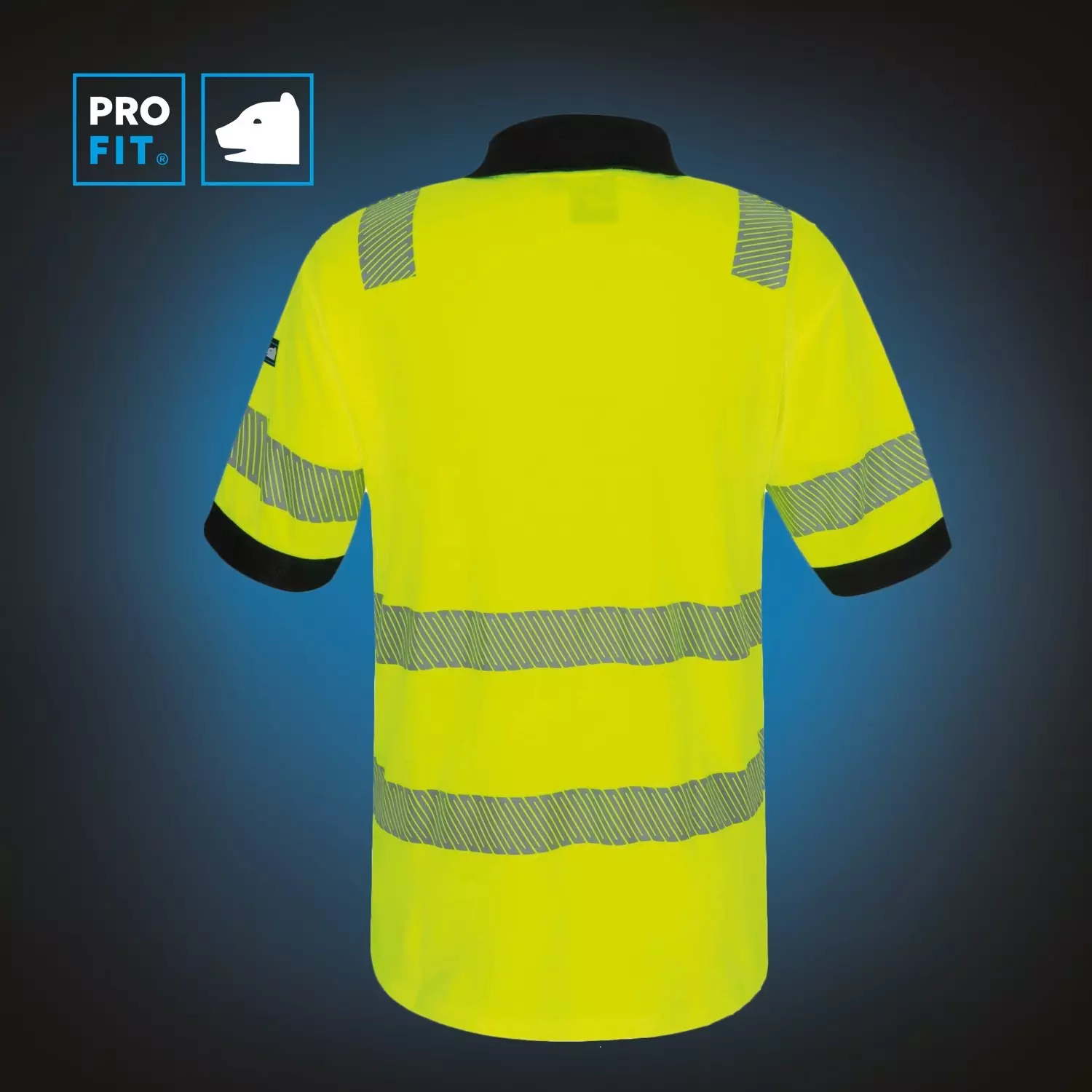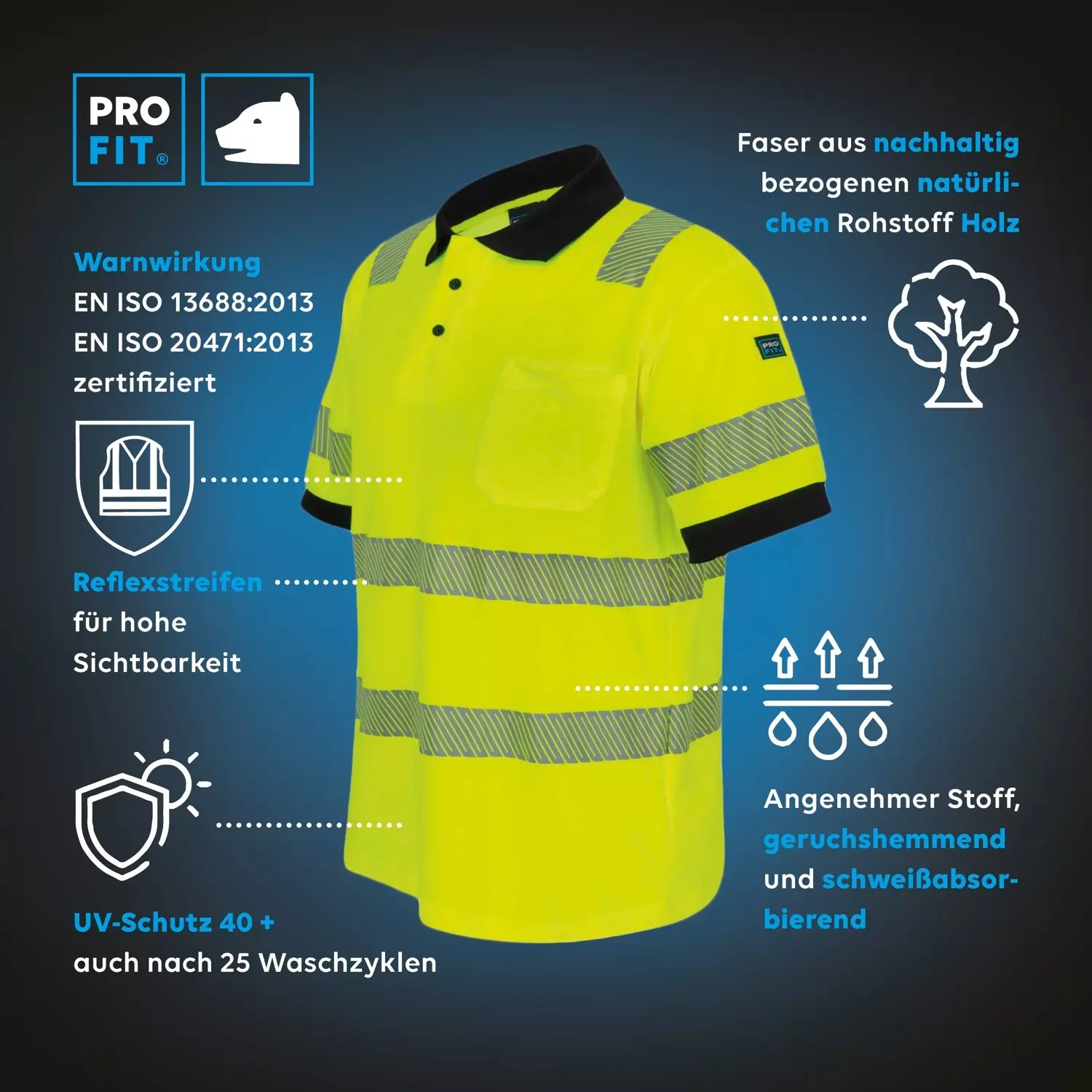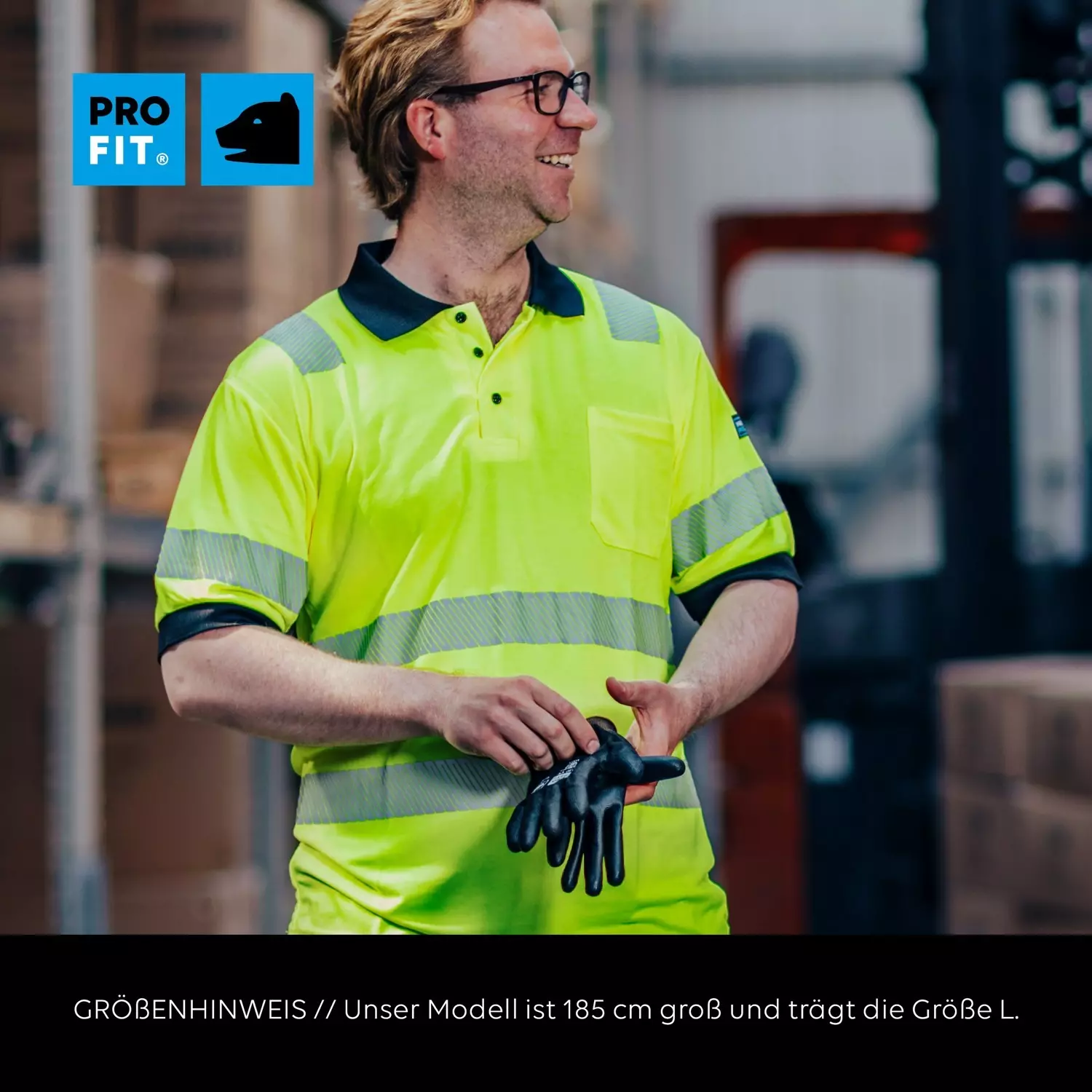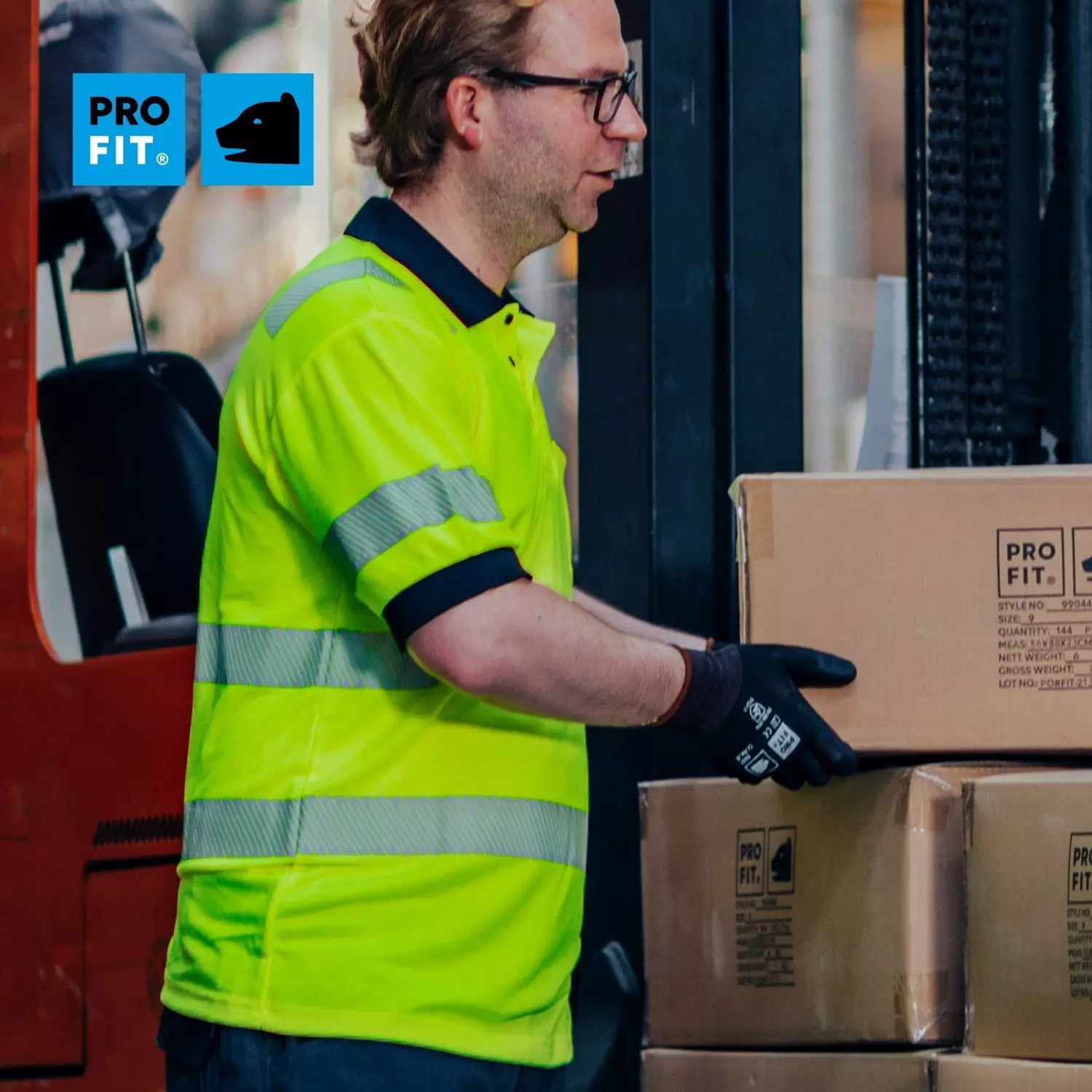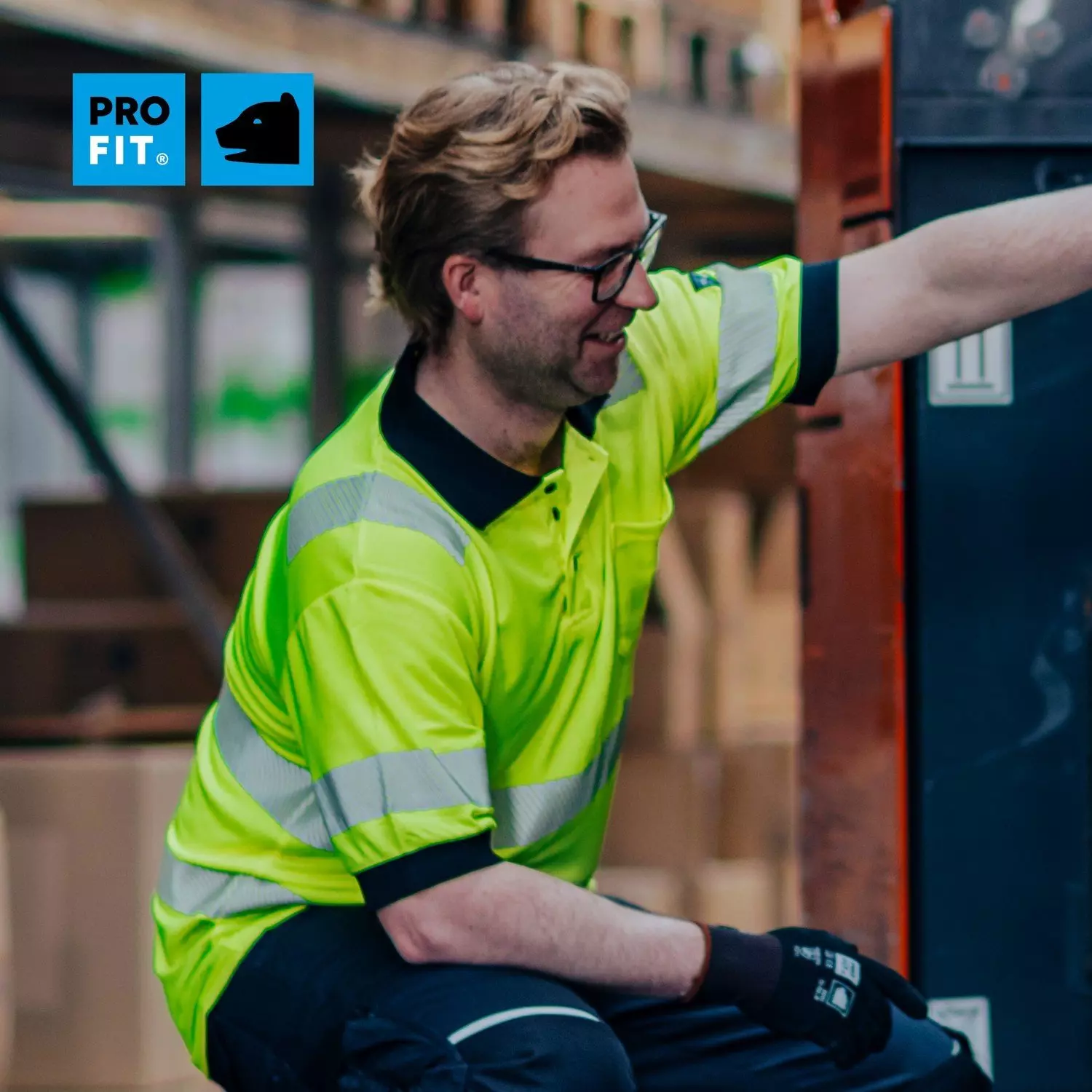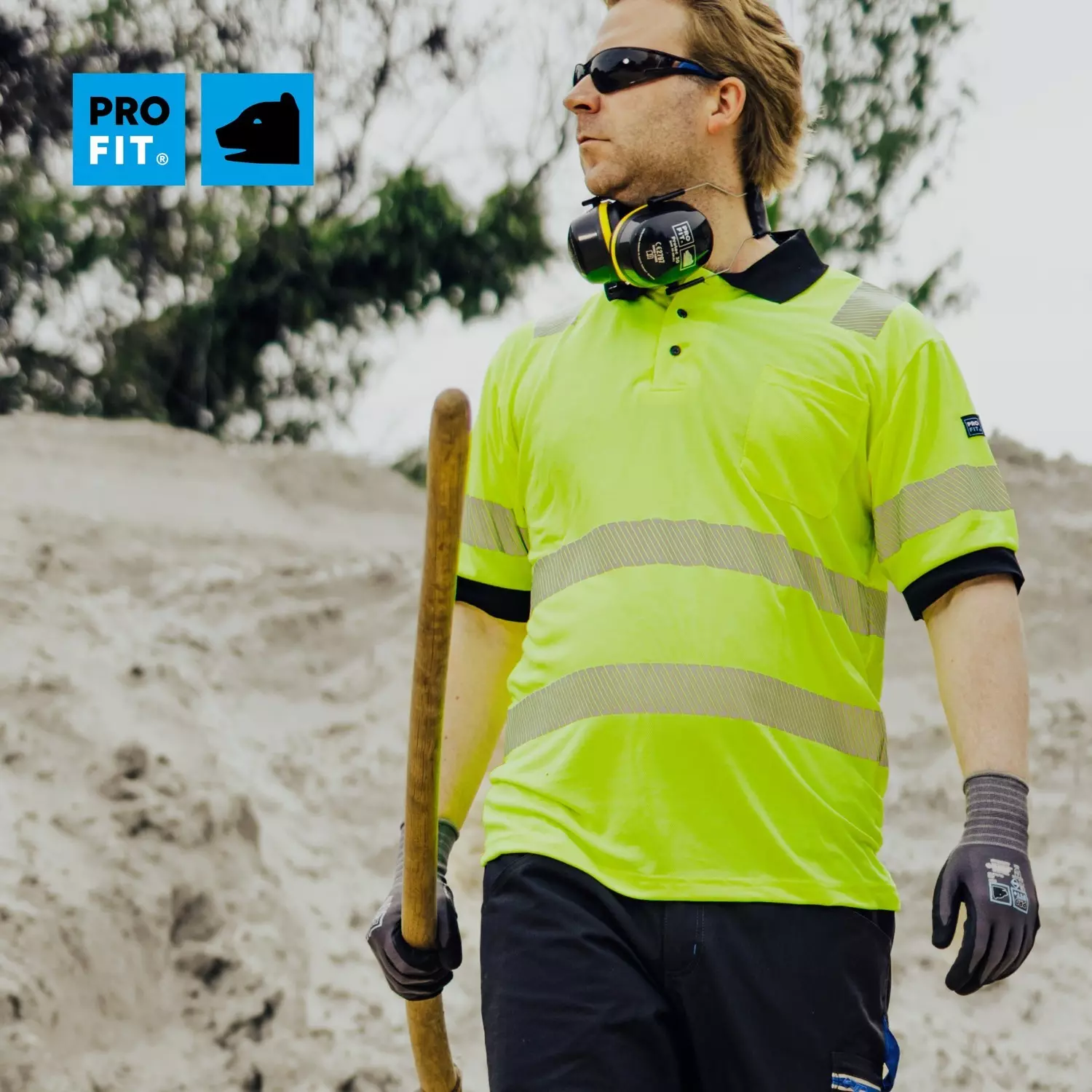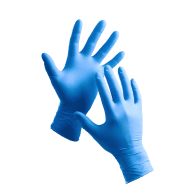Product description
This high-quality hi-vis polo shirt combines effective warning visibility with comprehensive UV protection of the highest category. The innovative combination of TENCEL™ lyocell fiber and polyester offers excellent wearing comfort and sustainable functionality. Equipped with segmented, stretchy reflective strips, the shirt meets the strictest safety standards while ensuring maximum freedom of movement.
Product features:
- Segmented, seamless reflective strips around body, arms and shoulder areas
- V-neck and sleeves with contrasting knitted cuffs
- Patch pocket for practical storage
- Printable area of 0.18m² without compromising hi-vis effectiveness
- Antibacterial and odor-inhibiting properties
Technical details:
- Material: 55% lyocell fiber (TENCEL™), 45% polyester
- Weight: 180 g/m²
- UV protection UPF 50, tested over 25 wash cycles
- Moisture-wicking and breathable
- OEKO-TEX® certified and suitable for allergy sufferers
Application areas:
- Construction and recycling
- Logistics and facility management
- Trades and manufacturing
- Heavy and light industry
Standards:
- EN ISO 13688:2013 (General requirements)
- EN ISO 20471:2013 A1:2016 Class 2 (Hi-vis)
- EN 13758-2:2003 A1:2006 (UV protection)
About Polo
Polo shirts combine comfort with a professional appearance, featuring a collared neckline and button placket. Perfect for business casual settings, uniforms, or everyday wear, these versatile garments offer breathable comfort while maintaining a polished look throughout the day.
- High Visibility
- UV Protective
- Antimicrobial Protection
- Machine Washable
Standards and labels
Fitzner Arbeitsschutz delivery terms
Free delivery when you order more than 1 650,00 kr from Fitzner Arbeitsschutz
Supplier shipping fee 55,20 kr
Brand minimum 1 100,00 kr
240,12 kr
Out of stock
Shipping fee is 55,20 kr for orders under 1 650,00 kr
Sold in units of one piece
